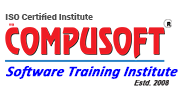Full-Stack Web Development Course – Master Front-End & Back-End Technologies
Course Overview
This Full-Stack Web Development Course is designed to equip learners with the skills to design, develop, and deploy dynamic web applications. Master both front-end and back-end technologies, work with databases, and gain hands-on experience with content management systems (CMS). Whether you’re an aspiring developer, freelancer, or entrepreneur, this course provides comprehensive training to build fully functional, scalable web applications from scratch.
Course Objectives
By enrolling in this Full-Stack Web Development training, you will:
✔️ Develop a strong foundation in full-stack development
✔️ Master front-end development using HTML, CSS, JavaScript, and frameworks
✔️ Build dynamic back-end systems using PHP & MySQL
✔️ Effectively manage and optimize databases for scalable applications
✔️ Utilize Content Management Systems (CMS) like WordPress for web applications
✔️ Integrate front-end and back-end components seamlessly
✔️ Deploy web applications and manage hosting environments
Who Can Join? (Prerequisites)
🚀 Basic computer literacy required
🚀 Understanding of the Internet & web technologies is helpful
🚀 Commitment & dedication to learning full-stack development
Course Details
📅 Total Sessions: 80 (Each session: 20 minutes)
⏳ Daily Learning: 1 Hour (20 mins session + 40 mins practice)
💰 Course Fee: INR 25,000.00
📡 Training Mode: Available Offline, Online, & Hybrid
What You Will Learn (Learning Outcomes)
By the end of this Full-Stack Web Development training, you will:
✔️ Master front-end development – HTML, CSS, JavaScript, Bootstrap
✔️ Gain proficiency in back-end development – PHP, Laravel, MySQL
✔️ Develop database management skills – Creating & managing MySQL databases
✔️ Integrate full-stack applications for seamless functionality
✔️ Work with Content Management Systems (CMS) – WordPress, Joomla
✔️ Understand web deployment – Hosting, domain management, and server configurations
✔️ Enhance problem-solving & debugging skills for real-world applications
Tools & Technologies Covered
This Full-Stack Web Development Course provides hands-on training with the latest UI/UX design, front-end, back-end, and database technologies to build dynamic and responsive web applications.
🔹 UI/UX & Front-End Development
✅ UI/UX Design – Learn user interface (UI) and user experience (UX) principles for intuitive web design
✅ HTML5 & CSS3 – Structure and style web pages with the latest HTML & CSS standards
✅ Bootstrap & Tailwind CSS – Use responsive frameworks to create mobile-friendly websites
✅ JavaScript – Enhance interactivity with modern JavaScript techniques
✅ React.js & AngularJS – Build dynamic, high-performance front-end applications
🔹 Back-End Development
✅ PHP & Laravel – Develop secure, scalable, and high-performing web applications using Laravel, the leading PHP framework
✅ RESTful APIs – Learn API integration for seamless data exchange between front-end & back-end systems
🔹 Database & CMS
✅ MySQL – Manage databases efficiently with structured queries and database optimization
✅ WordPress – Build and customize CMS-driven websites using WordPress themes & plugins
🔹 Deployment & Version Control
✅ Web Hosting & Deployment – Learn to deploy websites on cloud servers, shared hosting, and VPS
✅ Git & GitHub – Master version control, collaboration, and code management
Start Your Full-Stack Web Development Journey Today!
Take the first step in becoming a Full-Stack Web Developer with this comprehensive training program. Whether you’re looking to land a high-paying job, start your own business, or build professional-grade websites, this course will provide you with hands-on skills and real-world experience.
📞 Enroll now and start building dynamic, high-performance web applications!
